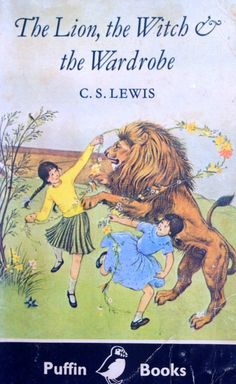Inspiring Young Readers
 posted on 18 Jan 2017
posted on 18 Jan 2017
Discovering The Pleasures Of A Puffin
I didn’t grow up reading Puffin paperbacks – I didn’t grow up reading much beyond comics in fact. I came to love Puffin books, especially those from the golden era of the 1960s, as an adult and as someone who obsessively trawls second-hand bookshops where good copies of these often classic children’s editions could be picked up for literally next to nothing.
That’s changed now though and aided by publications like Phil Baines’ excellent Puffin By Design there is a pretty lively collectors and nostalgia market that has pushed prices upwards. Having said that, however, anyone wanting to build a collection in this field will still be able to do so without paying silly money.
As an older reader I was drawn to Puffins from the 1960s less by aesthetics and more by the content – the selection of titles that were produced looks like a roll-call of some of the great children’s modern classics peppered with some daring and bold outsiders. My first encounter with C.S. Lewis’ Narnia books were in their Puffin incarnation, as was the more unusual Fair To Middling by Arthur Calder Marshall – the latter being a book I would eventually hunt down in its original hardcover edition over three decades later.
I think it’s the case that the Puffin list of the 60s and early 70s provided me with the closest I came to an education in children’s literature. These books and authors certainly didn’t make it onto my rather stuffy and formal English literature syllabus at university and so it became a case of trial and error in terms of what I picked up to read ( almost with a sense of illicit guilt – ‘why are you reading a children’s book?’ I was often asked). And I guess this is where the book design and the fabulous covers came into play – after all, how else could I make my selection once I’d exhausted the authors I’d heard of?
What I didn’t know until recently was this period of astonishing creativity and growth in Puffin books in the 60s and 70s coincided entirely with one person – Kaye Webb – who became Puffin’s second editor in 1961. In less than a decade she expanded the Puffin list from a couple of hundred titles to something more like a couple of thousand and at the same time secured the rights to a roster of great authors – Philippa Pearce, Alan Garner and Rosemary Sutcliffe to name just three on a very long list. Interestingly she and Penguin’s creator, Allen Lane, saw the Puffin imprint as the gateway drug that would create the next generation of readers who would in turn be dependent on the Penguin adult list.

Webb also knew the power of great artwork and the covers of Puffins from this period were designed and illustrated by people like Pauline Baynes, Anthony Maitland, Peggy Fortnum, Brian Wildsmith and a host of other established artists with a reputation in book publishing and children’s illustration.
So if my love of these books isn’t about childhood nostalgia – I’m not looking to recapture my early reading – what is it that makes me feel so comfortable with these golden era Puffins? I don’t really know but it must be a generational thing at some level – the books and their design values just seem to capture and enclose the essence of the 60s and I pick them up with a sort of satisfied sigh or a slightly bogus Proustian moment of reverie.
Books can do that. The Argentine-born bibliophile and scholar, Alberto Manguel, in one of his books about books – I can’t remember exactly which – suggests that simply by being around and handling books we absorb something important, something of their essence, even if we haven’t read them. It sounds a bit hokey and spiritual but I actually agree with him because it’s been my experience too. And it’s always my experience with classic Puffins even though I still haven’t read most of them.
Terry Potter
January 2017